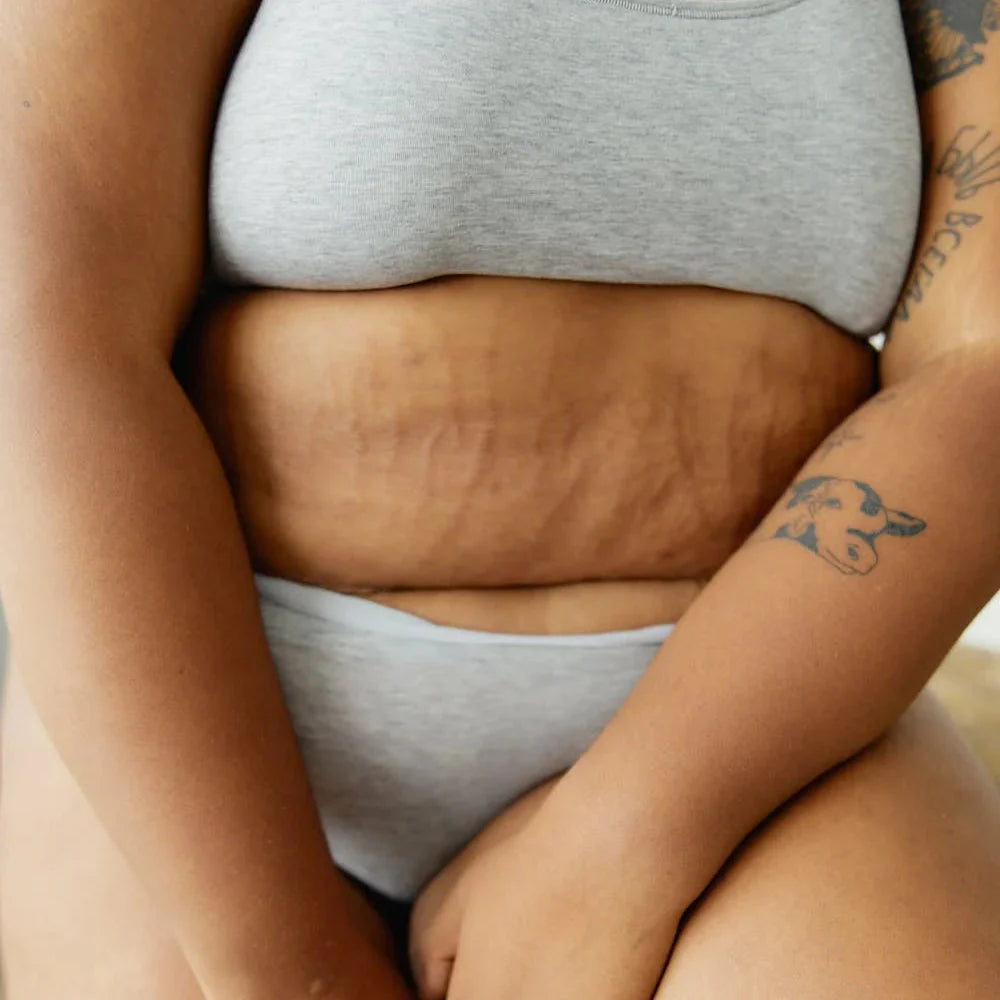Hardly anyone talks about it, yet almost every pregnant woman experiences it: your feet suddenly feel different.
They swell, become wider – or no longer fit into your favourite shoes.
Why does this happen? What does it mean for your body? And what can you do to support your feet during this special time?
Here you’ll find answers that truly help – gentle, honest, and grounded in everyday life.
1. Why your feet change during pregnancy
During pregnancy, your body runs a true miracle program – and it doesn’t just affect your belly, skin, and hormones. It also affects your feet.
1. Hormonal changes
The hormone relaxin, which your body produces to soften the pelvis and ligaments for birth, also affects other joints – including those in your feet.
As the ligaments become more elastic, the arch of the foot can lower slightly.
This changes the shape of the foot: it becomes wider or longer, sometimes even permanently by half to a full shoe size.
2. More weight, more pressure
As your baby grows, your body weight increases – and with it, the pressure on your feet.
This additional load can further contribute to the lowering of the foot arch.
Especially in the third trimester, many women notice that their feet feel tired or heavy more quickly.
3. Fluid retention (edema)
A classic pregnancy symptom: swollen feet and ankles.
Due to hormonal changes, the body stores more water in the tissue.
This is completely normal – but it can feel uncomfortable, especially in the evening or on warm days.
2. Which changes are typical
✓ Mild swelling: Especially in the evening or after standing for long periods.
✓ Larger or wider feet: Caused by a combination of relaxin, weight gain, and increased pressure.
✓ Sensitive or tense feet: Due to changes in circulation and added weight.
✓ Increased warmth: Enhanced blood flow during pregnancy can make your feet feel warmer.
All of this is normal and nothing to worry about – your body is doing incredible work and adapting to new demands.
The purpose of a toe spacer is to bring the spaces between your toes back into their original, natural position. This helps counter the tendency many feet develop over the years due to tight, fashionable footwear that compresses and alters their shape. The big toe in particular — our anchor and main pressure point — is often affected. It needs to be able to stay straight so it can properly support the foot’s alignment and overall stability.
Nadine Klein – Founder of Lieblinge and Orthopaedic Specialist
3. What you can do for swollen or aching feet
1. Elevate & relieve
Raise your feet as often as possible – this helps fluid drain and reduces swelling.
Tip: A pillow under your feet while sleeping can work wonders.
2. Movement & circulation
Gentle movement helps stimulate blood flow. Ideal activities include:
These small exercises strengthen the foot arch and help prevent tension.
3. Cooling for heat or swelling
A cool foot bath with a little sea salt or lavender oil helps reduce swelling and relaxes tired feet.
Avoid ice-cold water – lukewarm is gentler and more comfortable for your blood vessels.
4. Comfortable, supportive shoes
Choose breathable shoes with plenty of room for your toes and good cushioning.
Barefoot walking or flexible soles can help strengthen the foot muscles.
Many pregnant women prefer wearing half a shoe size larger during this time – completely normal.
5. Foot massage & care
A gentle massage boosts circulation, relieves tension, and feels wonderfully soothing.
Use a natural oil (e.g. almond or jojoba oil) to nourish and moisturize the skin.
And if you like, ask your partner for a little foot massage – it relaxes you and creates a moment of connection.
4. Why a toe spacer can feel especially good now (and how it really helps)
During pregnancy, your feet don’t just change on the outside – their entire alignment shifts.
Because of relaxin and the added weight, the toes often move closer together, the foot arch may flatten slightly, and the feet can feel tight, tense, or restricted.
A toe spacer can work small wonders here:
Babybox & Family recommendation
The toe spacer from Lieblinge, made from soft, flexible silicone, is ideal during pregnancy.
Just a few minutes a day – while reading, resting, or relaxing on the sofa – can help your feet unwind and give you an entirely new feeling of lightness.
A small tool with a big impact.
5. After birth – what happens to your feet?
After giving birth, your hormone levels gradually return to normal.
Fluid retention usually decreases within the first few weeks, and your feet often begin to feel lighter again.
However, relaxin remains active in the body for several months, so it can take some time for everything to stabilize.
For some women, their shoe size stays slightly larger.
This is nothing to worry about – it’s simply a sign that your body adapted to carry your baby safely.
6. When you should seek medical advice
In most cases, swollen or changing feet during pregnancy are harmless.
However, if the swelling suddenly increases, appears only on one side, or is accompanied by pain, headaches, or vision changes, you should contact your doctor or midwife immediately.
This could be a sign of gestosis or preeclampsia – and it needs to be checked by a medical professional.
Our conclusion
Your feet carry you every single day – and during pregnancy, they carry you through one of the most intense and beautiful phases of your life.
Their changes are a sign of your strength, your adaptability, and your journey into motherhood.
With loving care, gentle movement, mindfulness – and small helpers like a toe spacer – you can support them in the best possible way.
Because your feet deserve care too.
After all, they carry you through your very own little miracle.



